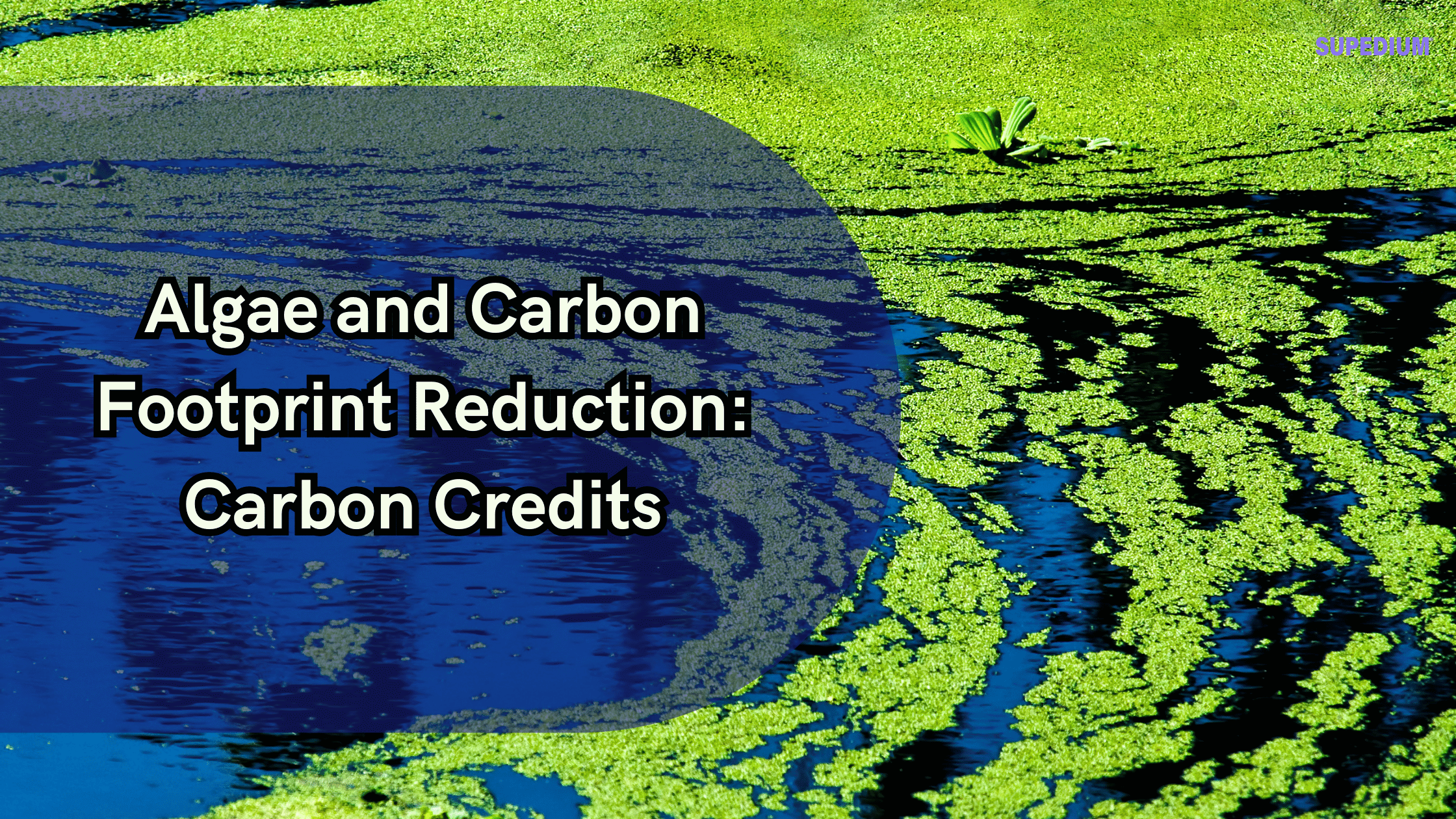Table of Contents
![]()
I. Introduction
As climate change continues to be a pressing global challenge, innovative solutions are being explored to reduce carbon footprints and promote sustainable practices. One such solution lies in the remarkable properties of algae, which have the potential to significantly mitigate carbon emissions. Coupled with the emerging market for carbon credits, algae can play a critical role in carbon footprint reduction initiatives. This article will delve into the relationship between algae and carbon sequestration, the mechanics of carbon credits, and the implications for both the environment and economy.
II. Understanding Algae
A. Types of Algae
Algae are simple, autotrophic organisms that can be broadly categorized into two main types: microalgae and macroalgae. Microalgae, which are microscopic in size, include species such as Chlorella and Spirulina. Macroalgae, often referred to as seaweeds, encompass larger forms like kelp and dulse. Both types are crucial in various ecological and industrial applications.
B. Biological Characteristics
Algae possess unique biological characteristics that make them efficient at photosynthesis and carbon absorption. They convert sunlight into energy while taking up carbon dioxide from the atmosphere, effectively acting as natural carbon sinks. The rapid growth rates of certain algae species also contribute to their capacity for carbon sequestration.
C. Benefits of Algae
Beyond their role in carbon capture, algae offer numerous benefits. They are rich in nutrients, serving as food sources for various marine organisms and even humans. Additionally, algae contribute to biodiversity by providing habitats for numerous aquatic species.
III. Algae and Carbon Sequestration
A. Role of Algae in Carbon Cycling
Algae play a pivotal role in the carbon cycle through their ability to capture and store carbon dioxide during photosynthesis. This process not only mitigates atmospheric carbon levels but also contributes to the formation of biomass, which can be utilized in various applications, including biofuels and animal feed.
B. Comparison with Terrestrial Plants
When compared to terrestrial plants, algae exhibit distinct advantages in carbon sequestration. They have faster growth rates, can thrive in non-arable land, and require fewer resources such as water and fertilizers. This makes them an efficient option for carbon capture in areas where traditional farming might not be viable.
C. Case Studies
Numerous successful algae farms and research initiatives have demonstrated the potential of algae for carbon sequestration. For instance, projects in the United States and Europe have shown significant carbon capture rates through the cultivation of specific microalgae species, resulting in the generation of carbon credits.
IV. Carbon Credits Explained
A. Definition and Purpose
Carbon credits are a market-based mechanism designed to reduce greenhouse gas emissions. Each credit typically represents one ton of carbon dioxide (or its equivalent in other greenhouse gases) that has been removed from the atmosphere or prevented from being emitted.
B. Mechanisms of Carbon Credit Systems
Carbon credit systems operate through various mechanisms, primarily cap-and-trade and voluntary carbon markets. Cap-and-trade systems set a limit on emissions, allowing companies to buy and sell allowances, whereas voluntary markets enable businesses and individuals to offset their emissions by purchasing carbon credits from various projects.
C. Calculation of Carbon Credits
The quantification of carbon credits involves careful measurement and verification processes. Projects must adhere to specific methodologies that accurately calculate the amount of carbon sequestered or avoided, often requiring third-party certification to ensure credibility.
V. Integrating Algae into Carbon Credit Systems
A. Potential for Algae-Based Carbon Credits
Algae present a promising opportunity for generating carbon credits through various project types, including large-scale cultivation, biofuel production, and waste treatment. However, accurate measurement and verification of carbon sequestration remain critical challenges.
B. Current Projects and Initiatives
Several projects globally have successfully integrated algae into carbon credit systems. For example, initiatives in China and Brazil have focused on algae cultivation to create biofuels, generating carbon credits in the process. These collaborations often involve partnerships with environmental organizations to ensure sustainability.
C. Regulatory Frameworks
National and international policies play a significant role in the establishment and success of algae-based carbon credit projects. Compliance with established standards and certification processes is essential to facilitate the growth of this market.
VI. Economic Implications
A. Market for Carbon Credits
The carbon credit market is rapidly evolving, with increasing demand for carbon offsets driving price trends. As awareness of climate change grows, the market for carbon credits, including those derived from algae, is expected to expand significantly.
B. Economic Benefits of Algae Cultivation
Algae cultivation can create jobs and stimulate local economies. As investment in algae-based technologies rises, opportunities for entrepreneurship and innovation are likely to increase, providing economic incentives for communities.
C. Cost-Benefit Analysis of Algae Projects
While the initial investment for algae projects can be substantial, the long-term benefits—such as revenue from carbon credits, energy production, and other marketable products—often outweigh the costs. However, potential risks and challenges must be carefully managed.
VII. Challenges and Limitations
A. Technical and Scientific Challenges
Scaling up algae cultivation presents various technical challenges, including optimizing growth conditions and developing efficient processing methods for biomass utilization. Research and innovation are crucial to overcoming these barriers.
B. Environmental Concerns
While algae cultivation can offer environmental benefits, there are also concerns related to nutrient runoff and potential impacts on local ecosystems. Sustainable practices must be adopted to mitigate these risks.
C. Market Barriers
Algae face competition from fossil fuels and other renewable energy sources, which can hinder market growth. Raising awareness of the benefits of algae as a carbon capture solution is essential for overcoming these barriers.
VIII. Future Directions
A. Innovations in Algae Technology
Advancements in algae technology, including genetic engineering and novel cultivation techniques, hold promise for enhancing carbon capture efficiency. Research into new algae strains and cultivation systems can further improve productivity.
B. Policy Recommendations
To facilitate the growth of algae-based carbon credit projects, policymakers should support research and development initiatives and provide incentives for businesses and communities to invest in sustainable practices.
C. Role of Education and Awareness
Public perception plays a crucial role in the success of algae initiatives. Education and awareness campaigns can help increase support for algae-based solutions and promote broader acceptance of carbon credit systems.
IX. Conclusion
Algae represent a unique and powerful tool in the fight against climate change, offering significant potential for carbon footprint reduction through carbon credits. By leveraging their natural carbon sequestration capabilities, we can create sustainable economic opportunities while mitigating greenhouse gas emissions. Collaborative efforts among researchers, policymakers, and businesses are essential to harness the full potential of algae in addressing one of the most pressing challenges of our time.
Share This





Be the first to comment